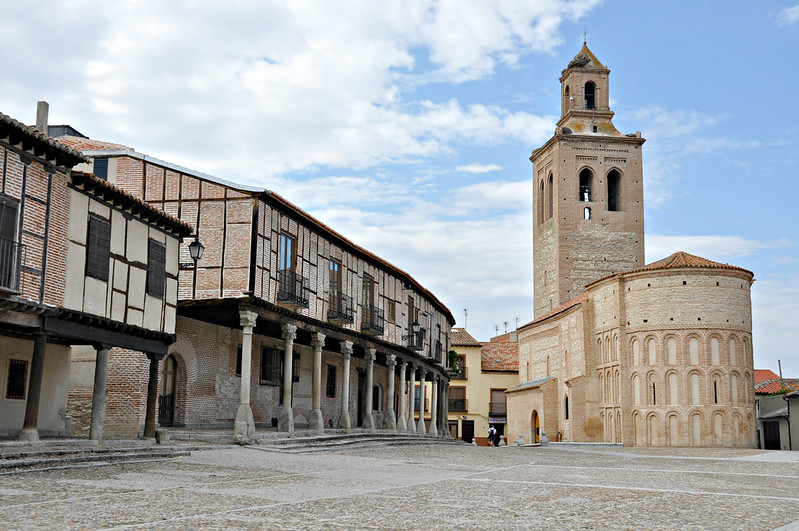
Caminhar pelas ruas de Arévalo foi uma verdadeira surpresa, sempre fui a trabalho mas com o objectivo de "conquistar" o seu Castelo com os miúdos decidimos explorar o resto da cidade. A Plaza de la Villa foi o nosso lugar preferido, um excelente exemplo da arquitectura popular espanhola com as casas de construção medieval com arcadas cujos pilares de pedra e madeira ainda hoje as mantêm de pé.
Walking the streets of Arévalo was a real surprise, I always went for work but now with the aim to "conquer" the castle with the kids we have decided to explore the rest of the city. The Plaza de la Villa was our favorite place, an excellent example of Spanish popular architecture medieval houses with arches whose pillars of stone and wood still keep them standing.
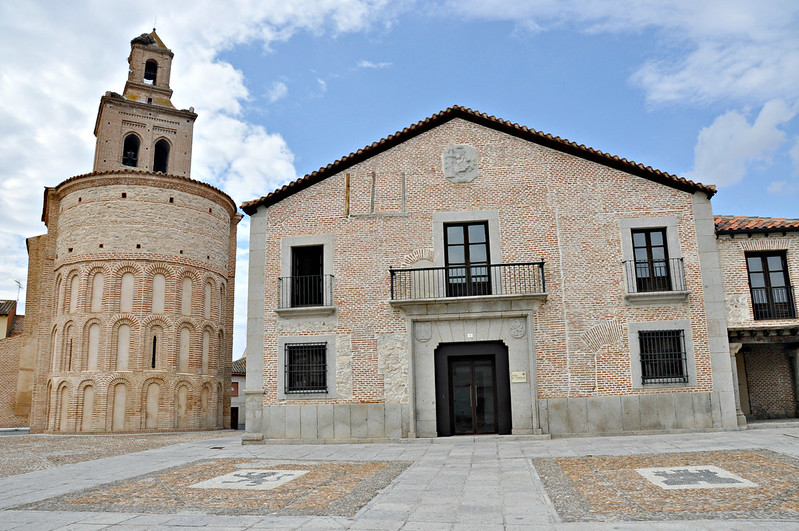
Alguns dos edificios mais importantes da cidade concentram-se nesta Praça, um deles o da Igreja de Santa Maria la Mayor construída no século XII com estilo Mudéjar. A sua torre é a mais alta de Arévalo. Ao lado está o Arevalorum ou o Museu de História, instalado na Casa de los Sexmos.
Na ponta oposta está a Igreja de S. Martin também construída no século XII onde se destacam as suas duas torres conhecidas como "gémeas", foi restaurada e funciona como Centro Cultural.
Fomos a seguir ao almoço aproveitando a tranquilidade da praça, seguramente que na época medieval era o coração da cidade.
Some of the most important buildings of the city are concentrated in this square, one of which is the Church of Santa Maria la Mayor built in the twelfth century with Mudejar style. Its tower is the tallest of Arévalo. Next door is the Arevalorum or the Museum of History, housed in the Casa de los Sexmos.
At the opposite end is the St. Martin church also built in the twelfth century which features its two towers known as "twin", has been restored and serves as a cultural center.
We went after lunch enjoying the tranquility of the place, surely that in medieval times it was the heart of the city.
At the opposite end is the St. Martin church also built in the twelfth century which features its two towers known as "twin", has been restored and serves as a cultural center.
We went after lunch enjoying the tranquility of the place, surely that in medieval times it was the heart of the city.
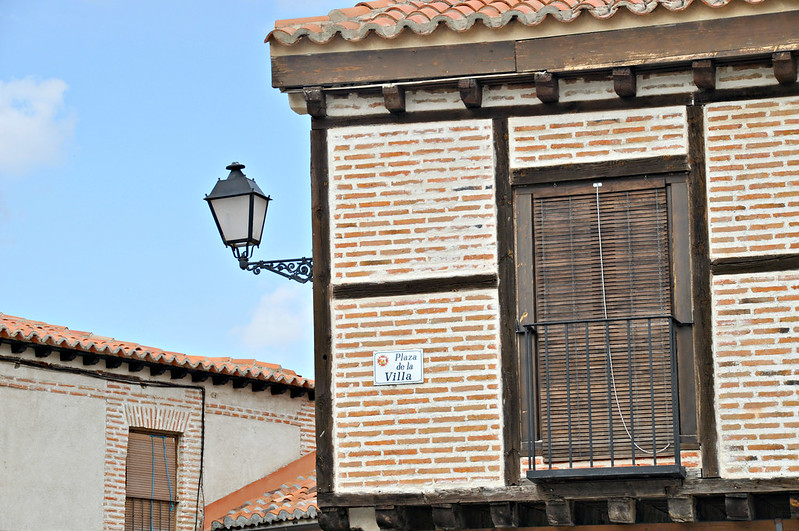

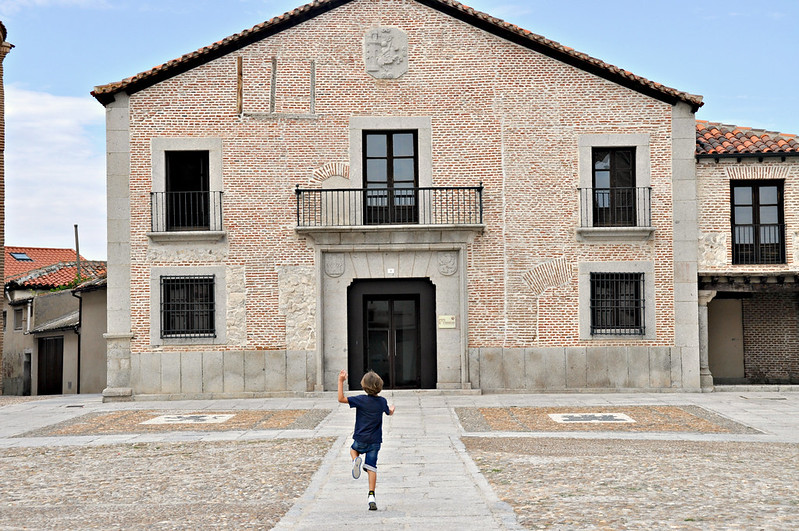
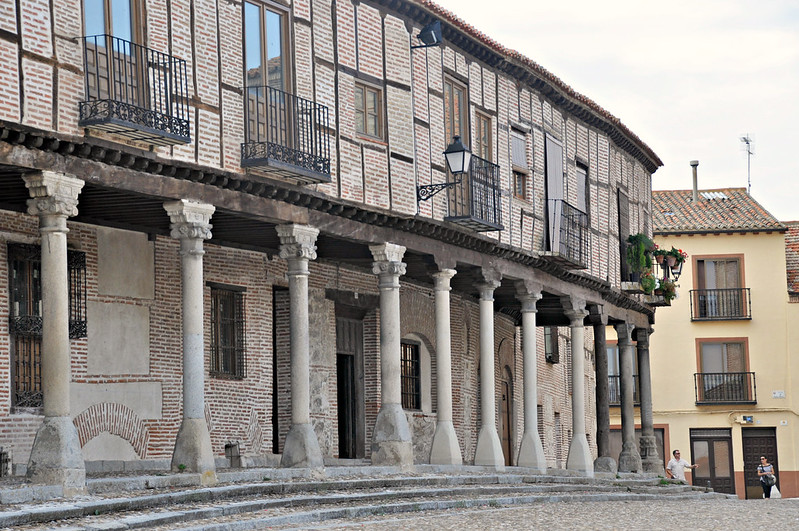
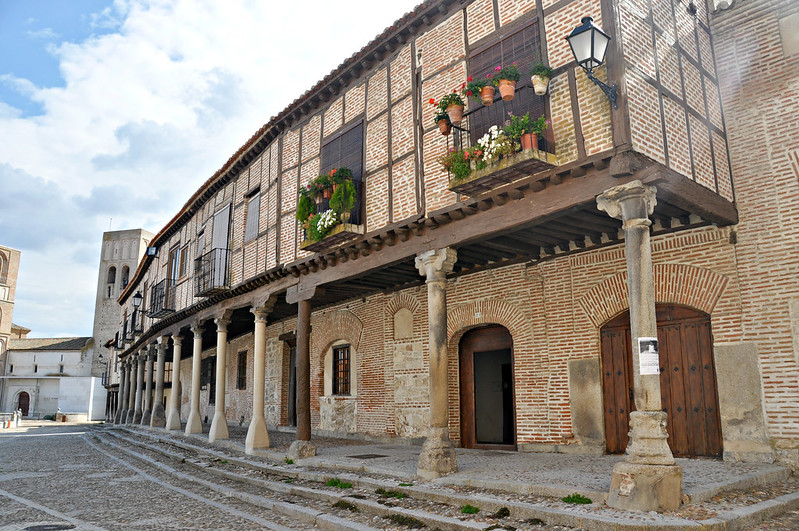
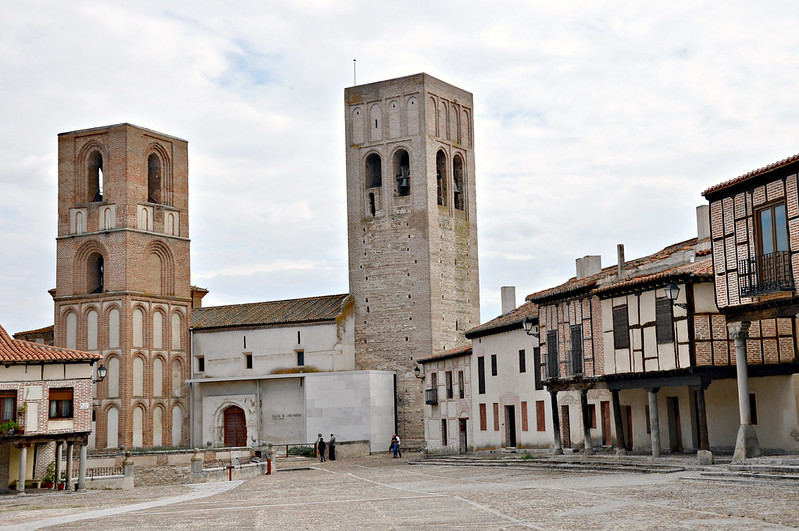
Our guide of:

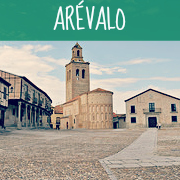
Mais um lugar a visitar nas minhas próximas viagens por Espanha!
ResponderEliminarnão está muito longe de Madrid e está carregado de história. ;)
EliminarTambém já visitei a praça e gostei bastante! isso sim fui em janeiro e estava um friooooooo!!!
ResponderEliminarbeijinhos
Cátia
Deve ser ainda mais bonita com neve...
Eliminar